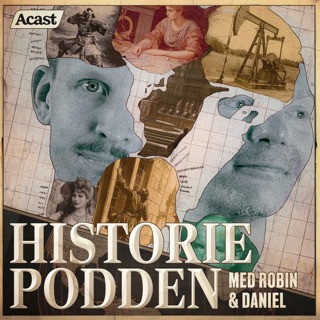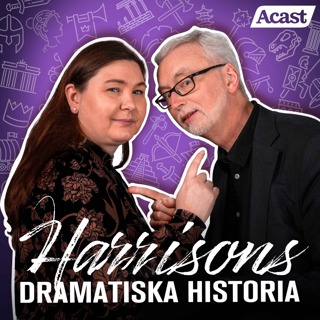
Episode 39 - (SUPERVISION) Supervisor's Book Club, pt 2
Subscribe on Apple Podcasts Subscribe on Google Play Subscribe on Stitcher The supervising keeps on coming as we continue our discussion of "The Supervisor's Guidebook". This week, Rob talks really fast and for almost an hour all about competency-based training and performance monitoring before Jackie makes a veiled threat that she'll come to your workplace to observe your supervision in action. Our show refuses to serve complement sandwiches so don't even ask. Readings discussed this episode: Reid, D.H., Parsons, M.B., & Green, C.W. (2012). The supervisor's guidebook: Evidence-based strategies for promoting work quality and enjoyment among human service staff. Morganton, North Carolina: Habilitative Management Consultants, Inc. If you're interested in ordering CEs for listening to this episode, click here to go to the store page. You'll need to enter your name, BCBA #, and the two episode secret code words to complete the purchase. Email us at abainsidetrack@gmail.com for further assistance.
20 Sep 20171h 17min

Episode 38 - (SUPERVISION) Supervisor's Book Club, pt 1
Subscribe on Apple Podcasts Subscribe on Google Play Subscribe on Stitcher Huzzah! It's our very first episode on supervision! For the whole month, ABA Inside Track will be channeling our favorite book clubs and discussing "The Supervisor's Guidebook". This week, we focus on the first part of supervising others: figuring out what you want to supervise! Then Rob and Diana finish each other's sandwiches. Readings discussed this episode: Reid, D.H., Parsons, M.B., & Green, C.W. (2012). The supervisor's guidebook: Evidence-based strategies for promoting work quality and enjoyment among human service staff. Morganton, North Carolina: Habilitative Management Consultants, Inc. If you're interested in ordering CEs for listening to this episode, click here to go to the store page. You'll need to enter your name, BCBA #, and the two episode secret code words to complete the purchase. Email us at abainsidetrack@gmail.com for further assistance.
13 Sep 20171h 14min

Episode 38 Preview
Subscribe on Apple Podcasts Subscribe on Google Play Subscribe on Stitcher Subscribe on YouTube It's Supervision September, everybody! Next week starts our three-in-a-row episode series on supervision. We'll be reading "The Supervisor's Guidebook" and sharing our thoughts in a friendly, informative, book-club format. We really hope you enjoy it! In the meantime, some great emails from around the world and Crayola's new behavior analysis colors. Readings for next week: Reid, D.H., Parsons, M.B., & Green, C.W. (2012). The supervisor's guidebook: Evidence-based strategies for promoting work quality and enjoyment among human service staff. Morganton, North Carolina: Habilitative Management Consultants, Inc.
6 Sep 201714min

Episode 37 - Pica
Subscribe on Apple Podcasts Subscribe on Google Play Subscribe on Stitcher You might think this is the Cathleen Piazza episode. Well, it sort of is...but we're mainly here to talk about pica, its many functions, and how much of a Sherlock Holmes/Batman you need to be to come up with effective treatments for this significant problem. To discuss pica, we'll need to say the word "butt" a hundred times, dig into bad movie lore, and figure out just what an herbal cigarette is. Plus, Rob has an existential crisis about his podcasting ego and Jackie learns a new word. And we're still left with a million questions about pica treatment. Better listen to this episode, or you'll have a million and one. Articles discussed this episode: Piazza, C.C., Hanley, G.P., & Fisher, W.W. (1996). Functional analysis and treatment of cigarette pica. Journal of Applied Behavior Analysis, 29, 437-450. doi: 10.1901/jaba.1996.29-437 Piazza, C.C., Fisher, W.W., Hanley, G.P., LeBlanc, L.A., Worsdell, A.S., Lindauer, S.E., & Keeney, K.M. (1998). Treatment of pica through multiple analyses of its reinforcing functions. Journal of Applied Behavior Analysis, 31, 165-189. doi: 10.1901/jaba.1998.31-165 If you're interested in ordering CEs for listening to this episode, click here to go to the store page. You'll need to enter your name, BCBA #, and the two episode secret code words to complete the purchase. Email us at abainsidetrack@gmail.com for further assistance.
30 Aug 20171h 12min

Episode 37 Preview
Subscribe on Apple Podcasts Subscribe on Google Play Subscribe on Stitcher Subscribe on YouTube Next week we're talking about the highly dangerous behavior, pica. Why do individuals ingest non-edible items and are there any treatments we can use to help them stop? But, before then, we share some updates to the website including where to find Preschool Life Skills data sheets (here) and what to get the BCBA who has everything. Articles for next week: Piazza, C.C., Hanley, G.P., & Fisher, W.W. (1996). Functional analysis and treatment of cigarette pica. Journal of Applied Behavior Analysis, 29, 437-450. doi: 10.1901/jaba.1996.29-437 Piazza, C.C., Fisher, W.W., Hanley, G.P., LeBlanc, L.A., Worsdell, A.S., Lindauer, S.E., & Keeney, K.M. (1998). Treatment of pica through multiple analyses of its reinforcing functions. Journal of Applied Behavior Analysis, 31, 165-189. doi: 10.1901/jaba.1998.31-165
23 Aug 201713min

Episode 36 - Research Grab Bag III: The Grab Baginning
Subscribe on Apple Podcasts Subscribe on Google Play Subscribe on Stitcher Every 12 episodes, our hosts choose articles from the research grab bag. And what a melange of delightful topics are discovered this week. We'll be reviewing research on infant vocalizations and imitations with Jackie, whether Daniel Tiger can teach children with autism to eat new foods and follow instructions with Rob, and which fun motor activity for children with autism may lead to the best on-task behavior with Diana. No topic is off-limits when it's a grab bag! Articles discussed this episode: Hirsh, J.L., Stockwell, F., & Walker, D. (2014). The effects of contingent caregiver imitation of infant vocalization: a Comparison of multiple caregivers. The Analysis of Verbal Behavior, 30, 20-28. doi: 10.1007/s40616-014-0008-9 Dotson, W.H., Rasmussen, E.E., Shafer, A., Colwell, M., Densley, R.L., Brewer, A.T., Alonzo, M.C., & Martinez, L.A. (2017). Evaluating the ability of the PBS children's show Daniel Tiger's Neighborhood to teach skills to two young children with autism spectrum disorder. Behavior Analysis in Practice, 10, 67-71. doi: 10.1007/s40617-016-0134-z Miramontez, S.K.H. & Schwarts, I.S. (2016). The effects of physical activity on the on-task behavior of young children with autism spectrum disorders. International Electronic Journal of Elementary Education, 9, 405-418. If you're interested in ordering CEs for listening to this episode, click here to go to the store page. You'll need to enter your name, BCBA #, and the two episode secret code words to complete the purchase. Email us at abainsidetrack@gmail.com for further assistance.
16 Aug 20171h 12min

Episode 36 Preview
Subscribe on Apple Podcasts Subscribe on Google Play Subscribe on Stitcher Subscribe on YouTube Oh joy! 12 more episodes in the bag. That means next week is a GRAB BAG!! What random research from the behavior analytic archives will we unearth? But, before the festivities begin, we share some errata from the ABA Inside Track community, meet Rob's new character, the BEERhaviorist, and learn about some exciting plans for supervision episodes in September. That's right, SUPERVISION CEs ARE COMING!!! Articles for next week: Hirsh, J.L., Stockwell, F., & Walker, D. (2014). The effects of contingent caregiver imitation of infant vocalization: a Comparison of multiple caregivers. The Analysis of Verbal Behavior, 30, 20-28. doi: 10.1007/s40616-014-0008-9 Dotson, W.H., Rasmussen, E.E., Shafer, A., Colwell, M., Densley, R.L., Brewer, A.T., Alonzo, M.C., & Martinez, L.A. (2017). Evaluating the ability of the PBS children's show Daniel Tiger's Neighborhood to teach skills to two young children with autism spectrum disorder. Behavior Analysis in Practice, 10, 67-71. doi: 10.1007/s40617-016-0134-z Miramontez, S.K.H. & Schwarts, I.S. (2016). The effects of physical activity on the on-task behavior of young children with autism spectrum disorders. International Electronic Journal of Elementary Education, 9, 405-418.
9 Aug 201715min

Episode 35 - Response Interruption and Redirection w/ Dr. Bill Ahearn
Subscribe on Apple Podcasts Subscribe on Google Play Subscribe on Stitcher This week we're joined by special guest, Dr. Bill Ahearn, to discuss response interruption and redirection (RIRD). We discuss the fascinating history of how this popular treatment for vocal stereotypy came to be, the ins and outs of implementing the treatment, when to use it, and, more importantly, when NOT to use it. Plus, some helpful troubleshooting tips for practitioners and why you shouldn't pronounce it "rrrrird". Articles discussed this episode: Ahearn, W.H., Clark, K.M., MacDonald, R.P.F., & Chung, B.I. (2007). Assessing and treating vocal stereotypy in children with autism. Journal of Applied Behavior Analysis, 40, 263-275. doi: 10.1901/jaba.2007.30-06 Colon, C.L., Ahearn, W.H., Clark, K.M., & Masalsky, J. (2012). The effects of verbal operant training and response interruption and redirection on appropriate and inappropriate vocalizations. Journal of Applied Behavior Analysis, 45, 107-120. doi: 10.1901/jaba.2012.45-107 Colon, C.L. & Ahearn, W.H. (in prep). An analysis of treatment integrity of response interruption and redirection. If you're interested in ordering CEs for listening to this episode, click here to go to the store page. You'll need to enter your name, BCBA #, and the two episode secret code words to complete the purchase. Email us at abainsidetrack@gmail.com for further assistance.
2 Aug 20171h 21min






















